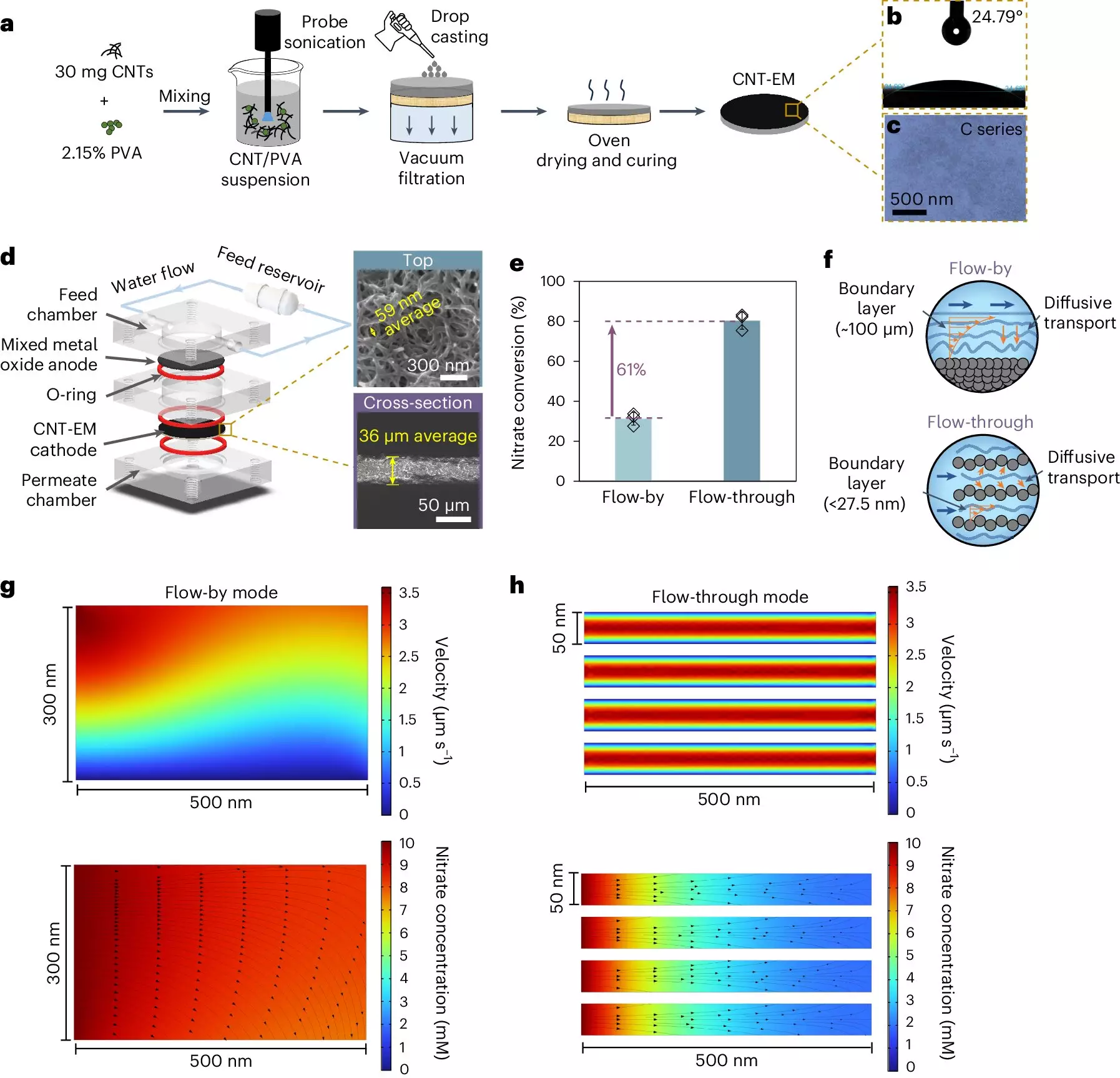Nitrate contamination in drinking water is not merely a nuisance; it represents a genuine threat to public health and the environment. Elevated levels of nitrates, often resulting from agricultural runoff and inadequate wastewater treatment, can have dire consequences, such as methemoglobinemia (blue baby syndrome) and other health-related issues. Yale researchers, led by assistant professor Lea Winter, are tackling this crucial problem with groundbreaking technology aimed at removing nitrates efficiently and sustainably.
Revolutionizing Nitrate Removal with Innovative Technology
Traditionally, methods to address nitrate contamination have hinged on either separating or destroying nitrates in water sources. “The conventional separation approach leads to concentrated waste that may re-enter the ecosystem, compounding the problem,” Winter argues. Such methods often leave much to be desired; mere separation cannot be deemed a complete solution. Instead, the focus should be on destruction, effectively neutralizing nitrates before they pose risks.
Despite the advancements in biotechnological approaches like biological denitrification, these methods exhibit weaknesses, relying heavily on microbial activity that can falter with slight variations in environmental conditions. The slow kinetics of microbial processes present further challenges, often requiring days to achieve significant nitrate removal. Winter and her team have taken a pivotal step forward with electrocatalytic processes, which promise not just control but also speed in nitrate destruction. By leveraging electrical energy, these processes bypass many limitations of classical biological methods.
Electrified Membranes: A Game Changer in Water Treatment
What sets Winter’s research apart is the introduction of electrified membranes utilizing carbon nanotubes. Traditional electrochemical systems often utilize flat plate electrodes, which run into a bottleneck in their efficiency due to a phenomenon known as the boundary layer—essentially a layer of stagnant fluid that forms at the electrode’s surface. As Winter articulates, “In conventional designs, this layer restricts fluid flow and the transport of nitrates, hampering the overall reaction efficiency.”
The innovation of Winter’s membranes lies in their microstructure. With pen-sized pores at the nanoscale—about 50 nanometers—these membranes are dramatically more efficient. By minimizing the slow-moving boundary layer that complicates traditional approaches, Winter’s design facilitates faster transport of nitrates to the electrode surface, enabling swifter reactions. This refined control over the system allows for effective nitrate conversion without the typical reliance on metals, traditionally a staple in electrochemical approaches.
Speeding Up the Process: From Hours to Seconds
One of the most striking achievements of this new technology is the drastic reduction in the time necessary for efficient nitrate removal. Historical practices often required several hours to eliminate around 80% of nitrates. In stark contrast, Winter’s novel systems can accomplish this feat within a mere 15 seconds. “We are compressing the timeline from hours to seconds, which is a monumental leap forward,” she notes. This efficiency not only revolutionizes the approach to nitrate removal but also enhances the feasibility of deploying such solutions widely across contaminated areas.
The practicality of Winter’s membranes is further validated by field tests undertaken by her research team. Water samples drawn from Lake Wintergreen and deliberately spiked with nitrate serve as a testbed for their technology. “We aimed to assess the effectiveness of our approach under real-world conditions, particularly with water featuring varying contamination levels typical of what communities face,” Winter explains.
A Bright Future for Water Safety
The implications of Yale’s research extend beyond mere academic intrigue; they touch the lives of countless individuals who rely on clean water. Nitrate contamination poses serious public health risks, and the successful implementation of new technologies like electrified membranes could provide communities with the tools needed for sustainable water management. Technologies that promise quicker and more effective removal of hazardous materials from drinking water systems pave the way for healthier ecosystems and safer communities.
As the demand for clean water escalates against a backdrop of environmental changes and population growth, innovations such as Winter’s electrified membranes become not only timely but essential. By challenging conventional methods and introducing a paradigm shift in nitrate removal, Yale’s research exemplifies how scientific inquiry can yield practical solutions to pressing environmental challenges. The pressing question now is: how quickly can this transformative technology be adopted in communities across the globe facing similar threats?

